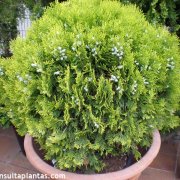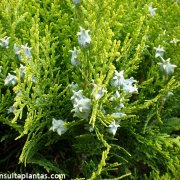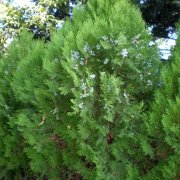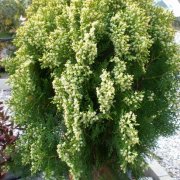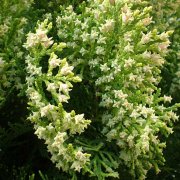Care of the tree Platycladus orientalis or Thuja orientalis |
|
The genus Platycladus, family Cupressaceae, includes a single species of conifer native to China: Platycladus orientalis. It was previously classified as Thuja orientalis. Common names: Thuja orientalis, Chinese thuja, Oriental thuja, Biota, Chinese arborvitae, Oriental arborvitae. They are evergreen conifers with a pyramidal shape and flat branches that reach 10 meters (32.8 feet) in height. The foliage is dense and consists of small, medium green, scale-shaped leaves; there are numerous cultivars of other colors. They produce decorative bluish, rounded fruits with small hooks. Thuja orientalis is used as isolated specimens, to form hedges and screens against the wind, in rockeries and combined with creeping conifers. Platycladus orientalis grows in full sun and semi-shade exposures. It resists not very intense frosts. Chinese thuja grows in any type of soil but prefer a light, clayey soil that contains organic matter. Water frequently so that the substrate always remains moist. Oriental thuja does not resist drought. Fertilize in autumn with compost or manure. Thuja orientalis accepts pruning very well to give them the most varied forms. Platycladus orientalis is a quite resistant plant to the usual pests and diseases but sensitive to drought. Chinese arborvitae is propagated by woody cuttings in spring or fall. |
Images of the tree Platycladus orientalis or Thuja orientalis |
Find plants
Platycladus orientalis or Thuja orientalis | Care and Growing
© 2025 FavThemes
